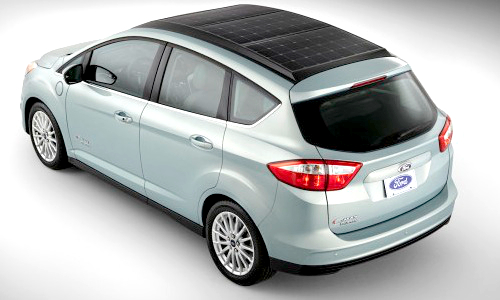Automotive AC Systems 101

I don’t think anyone would disagree that air conditioning (AC) systems are pretty simple to operate. You turn them on, cold air blows out and soon the inside of your hot car is comfortable. Not much to it. But have you ever wondered how this all works? Just exactly how do you make this “cold air” anyway?
Making cold air
Let’s start with Concept #1. The AC system in your car doesn’t “make cold air,” what it does is “removes the heat from the hot air.” Another way to look at this is that there is a spectrum of temperatures. Objects range from very cold to very hot. If you want to make something hotter, just add heat. Want to cool it down, then remove heat. So what air conditioners do is “remove heat from the hot air.” Here’s how.
How AC works
Let’s illustrate the typical automotive AC process with a diagram. The compressor (Item 4 on the diagram) compresses a gaseous refrigerant to a pressure of about 200 to 250PSI. The condenser (Item 1 on the diagram) acts like a radiator by giving off heat. This happens inside your engine compartment. When this heat is released, the refrigerant gas turns into a liquid.
From the other side of the condenser, the “Liquid Line” connects to the Orifice Tube (Item 2 on the diagram). At the orifice tube, the liquid refrigerant squeezes through a narrow passage yielding a temperature and pressure drop. After the liquid passes through the orifice, it gets cold and this cold refrigerant flows to the evaporator (Item 3 on the diagram).
The evaporator is also set up like a small radiator with the refrigerant circulating thru it. A fan pushes air across the cold evaporator which removes the heat from the air. The cold surface of the evaporator also condenses humidity out of the air which it allows to drain under the car.
At the outlet of the evaporator an accumulator (not shown) is used to store liquid refrigerant that may have made it thru the evaporator. The Suction Line at the bottom of the diagram connects the outlet of the accumulator and to the inlet of the compressor. This restarts the loop at the compressor.
About Refrigerants
The fluid inside the tubing of your car’s air conditioner is called the refrigerant. The technicians at Kims Chevrolet of Laurel, a local Chevrolet dealer in Laurel, MS, schooled us on the finer points of automotive refrigerants.
Two types of refrigerant have been used in cars and trucks: R-12 Freon and R-134a Freon. R-12 was the original refrigerant that’s been used since the 1940s. worked great but R-12 is chlorofluorocarbon (CFC) and this has been shown to attack the earth’s ozone layer, contributing to global warming.
In 1990, The Clean Air Act agreed to cease production of R-12 refrigerant. The result is that all vehicles starting from 1994 and on came with R-134a refrigerant. R-134a is tetrafluorothane which is a hydrofluorocarbon (HFC). HFC refrigerants work almost as well as R-12 but are far less harmful to the ozone layer.
Refrigerant Oils
It is important to know that oils circulate along in your AC system along with the refrigerants. And R-12 and R-134a each use a different type of oil. Mineral Oil is used with R-12 refrigerant and synthetic polyalkyline glycol is used with R-134a refrigerants. Your mechanic will know this.
What you can do to keep your AC system healthy
There are a couple of things that you can do to keep your car’s AC up to snuff. First, run the system a few minutes at least once a week no matter how hot the temperature outside might be. Yes, this means even in the winter, here’s why: this ensures that the many hoses, valves and pumps throughout the AC system are kept well lubricated by the refrigerant oil we discussed above.
Second thing to do is whenever you have the car serviced, make sure you ask the mechanic to check the refrigerant level and top off the system if necessary. The air conditioner is not always included in a standard log book service, so it can be easily neglected during servicing. You mechanic will connect up a set of special gauges to your AC system and they will be able to see how much refrigerant is present and what pressure it is at.
One last thing, it is good practice to get a full air conditioning service at least once a year. Try and do this before the hotter months start, for obvious reasons!





